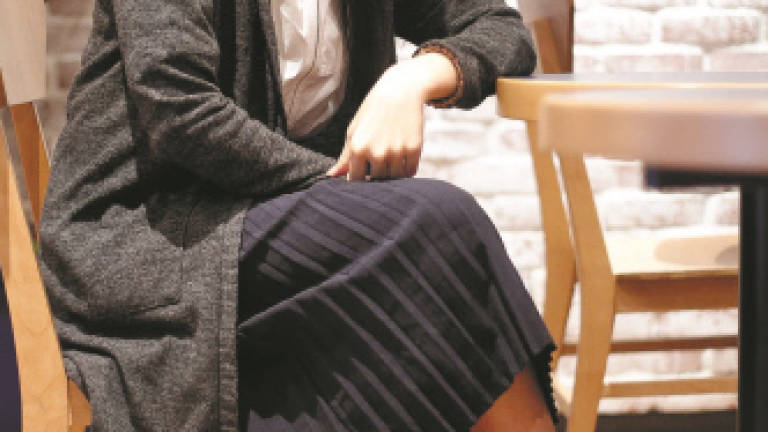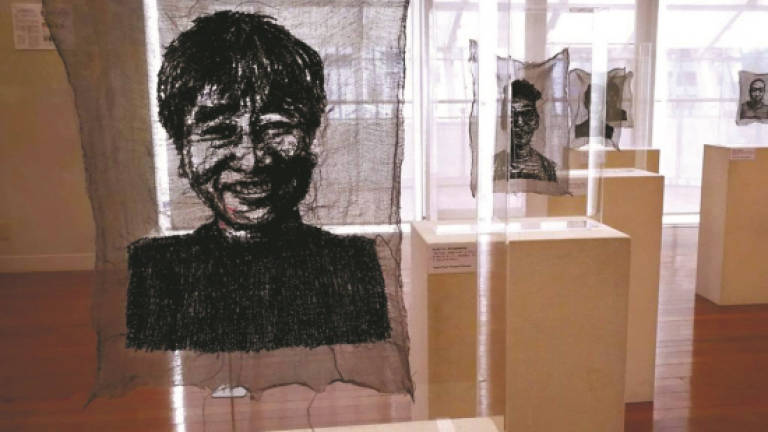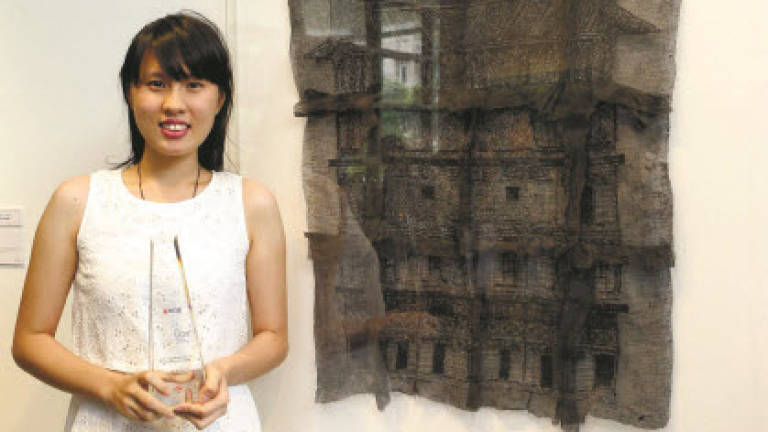From starving to successful



GLEEFULLY nodding in agreement to the mention of Howl's Moving Castle, an animated film by the maestro of Japanese animation Hayao Miyazaki that inspired a piece of art she had crafted using embroidery on gauze, Yim Yen Sum is a stripped down portrait of an artist.
Self-deprecating to a fault, and completely vacant in the stereotypes often associated to the more pretentious circle of artists, Yim claims, "I had no other talent. When I was in Form 3, I tried hard to study all the subjects, but my results remained bad. I felt like maybe I had no talent in studying, and that perhaps art is the only choice."
Not being bound by the shackles of responsibility as the youngest in her family, Yim would go on to join an art school, winning multiple awards and being part of various exhibitions along the way, before her big break came last year.
After almost seven years of living as a "starving artist", Yim submitted her embroidered artwork The Floating Castle for United Overseas Bank's 2016 Painting of the Year competition, ultimately snagging the US$25,000, (RM105,050) grand prize and a residency programme in Japan's Fukuoka Asian Art Museum.
Do you come from an artistically inclined family?
My mum loves craft. Before our family had financial problems, she would do crafts and decorations, but after, she had to work. By the time I was born, she had stopped completely. As for my father, he doesn't love art, and doesn't comment on my involvement in it.
As my mum was a chef, she would decorate the food so we would have the appetite to eat. I used to help her, when she would take the time to arrange things like carrots into flower shapes, small things that made the dishes look nice. It fascinated me.
Did they encourage you when you chose art?
As a first year student in college, I studied the basics of drawing, and when my mother saw my drawings, she responded "Oh, this is so realistic. My daughter painted this!" Initially they were really happy for what I could do, but after graduation, they were worried that art could not help me survive.
I tried to alleviate their worries, so I never asked them for money, and I had to work many jobs to survive, but after winning the prize money, I think they gradually began to believe in my ability.
Do you think it's necessary to study art in order to create art?
No, it's not necessary. There are artists without an art background, but they still do quite well. Yet what I cannot deny is that art school really helps us to find our voice. After I left high school, I knew nothing about art. But studying Fine Arts in Dasein Academy of Art really gave me a good guideline on how I could become an artist and which direction I could go towards.
What made you join UOB Malaysia's Painting of the Year competition?
I think you know! (laughs) The money! Other than the prize, I knew the winners from previous years. Gan Tee Sheng (2013's UOB Painting of the Year winner) is my best friend and I saw how his life changed after he won due to getting a lot of different opportunities.
At the time, I was still very poor and I had to do a lot of different jobs to sustain my livelihood, so I used to dream maybe I could join this competition, and it could change my life. I did not think I would win, as my experience was mostly in installation art pieces and sculptures, whereas the UOB competition were about paintings. I tried my luck.
Where do you get your inspiration for art from?
I grew up in KL, living in a flat with four houses. I never spoke to my neighbours, or knew anything about them. After I studied in college, I had a project about research and photography in Malacca. In my very first trip, I saw the difference while living with my friend's family in their neighbourhood, where everyone shared their food and conversed with each other as part of a community. It was very new to me. It made me think about the environment and the relationships between people.
Why was it important for you to highlight culture and tradition through art?
We study the past to know the future. We need to know who we are. This is the topic I felt would interest others as much as it interested me. Where we come from, who we are. I think this is important.
What was the experience that you took away from your Fukuoka Asian Art Museum residency programme?
It was my first time to Japan. I felt like the way they spoke and treated each other is so much different than what I had seen here. It was an interesting experience, because that environment affected how I talked and thought about things, even the language.